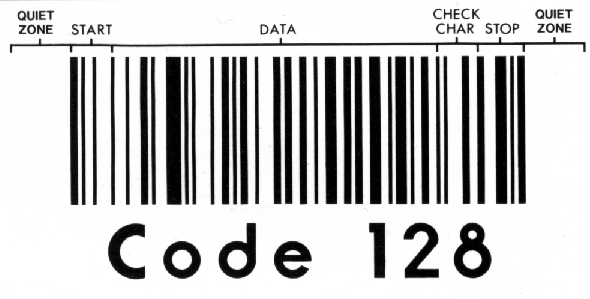Table 2.2. Structure of Code 128
| one of three start codes "START "=103, or | the data itself | a check character | a stop character | Termination bar of 11 |
We will now code the above example, HI345678, in Code 128. As we calculated in the Checksum Digit Calculation section, the checksum digit is 67. So we must also code the checksum digit at the end of the message.
We encode each digit using the encoding table above:
- The START-A character: 11010000100
- The digit "H" encoded as: 11000101000
- The digit "I" encoded as: 11000100010
- The "CODE-C" character: 10111011110
- The digits "34" encoded as: 10001011000
- The digits "56" encoded as: 11100010110
- The digits "78" encoded as: 11000010100
- The checksum digit of 67 encoded as: 10000101100
- The STOP character: 11000111010
- The termination bar: 11
This is shown in the following graphical representation where the bar code has been sectioned-off into areas that reflect each of the 10 components just mentioned.





![[Note]](https://www.crifan.com/files/res/docbook/images/note.png)


